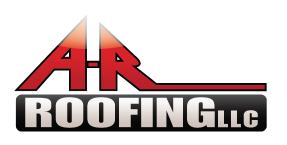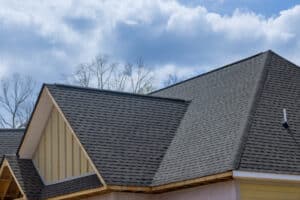Homeowners usually consider a roof inspection an afterthought until they see watermarks on their walls…

What You Need to Know About Replacing Roof Shingles with Solar Panels
As more people embrace solar energy, it’s no surprise that both homeowners and business owners are jumping on the solar panel bandwagon to cut down on energy costs and reach sustainability goals. Solar panels are an awesome investment, but when it’s time to swap out or fix up those roof shingles, they can throw a curveball into the mix.
Whether you’re a homeowner or a business owner managing a bigger setup, it’s key to know the ropes of roof maintenance when solar panels are in the picture. This guide is your go-to for navigating the ins and outs of repair and replacing roof shingles on properties with those shiny solar panels.
1. The Importance of Roof Condition
For those who haven’t yet installed solar panels but are here to research roof maintenance post-installation, here’s a crucial tip: ensure your roof is in excellent condition before installing solar panels.
Solar panels typically last 25-30 years which surprisingly lines up pretty nicely with new roof longevity. For homeowners, this means avoiding the hassle and cost of removing and reinstalling solar panels for future roof repairs. For business owners, it means the same but also includes minimizing disruptions to operations and reducing the risk for unexpected repairs and expenses down the road. If your roof is nearing the end of its life, replacing shingles and roofing before solar panel installation is a smart move.
2. The Process: Removing and Reinstalling Solar Panels for Roof Repair
When it is necessary to replace roof shingles on a roof with existing solar panels, the panels will need to be temporarily removed. There are several steps to get this done before actual shingle work can begin:
- Disconnecting the System: The solar power system must first be shut down and disconnected. This is essential to ensure safety and protect the system from damage.
- Panel Removal: Solar panels are very carefully removed from the roof. On a home, this might involve less than 10 panels, while on a commercial building, it could involve a large array covering significant roof space. The timeline for removal (like most things) depends on the size and complexity of the solar setup.
- Shingle Replacement: With the panels out of the way, the roofing contractor can now replace the old shingles with new ones and evaluate overall roof condition.
- Reinstalling the Panels: After the roof work is complete, the solar panels are reinstalled, reconnected, and tested to ensure everything is functioning correctly. The time this takes, again, depends on the size of the system
3. Choosing the Right Roofing Materials
When replacing shingles on a roof that supports solar panels, selecting the right roofing material is critical. This decision impacts both the durability of the roof and the efficiency of the solar panels. Here’s what to consider:
- Durability: Opt for roofing materials that offer a long lifespan, ideally matching or exceeding the lifespan of your solar panels. For residential properties, asphalt shingles or metal roofing are common choices. For commercial properties, materials like TPO (Thermoplastic Polyolefin) or EPDM (Ethylene Propylene Diene Terpolymer) might be more suitable, depending on the roof type.
- Compatibility: Ensure that the new shingles or roofing materials are compatible with the solar panel mounting system. In commercial settings, where flat roofs are common, this might involve special considerations for mounting systems.
- Warranty: Pay attention to the warranties on both your roofing materials and solar panels. Homeowners and business owners alike should ensure that the shingle replacement doesn’t void any existing warranties. This might require using specific contractors or materials approved by the manufacturer.
Common Roofing Systems and Materials
Metal Roofs: Lasting 50 years in many cases, metal roofs offer contractors a relatively straightforward solar panel installation process. Their strength, durability, and low maintenance make them solar energy system darlings.
- Tile Roofs: Because tiles are not necessarily the best materials for attaching solar systems, removing and reinstalling materials may be required. Tile tends to be brittle, and it’s not uncommon for property owners to move on to a different type of material. If you are already thinking about tile roof replacement, this may be an opportunity to get a new roof and solar panels.
- Tar and Gravel Roofs: With a life expectancy of 30 years, tar and gravel roofs can accommodate a highly productive solar energy system. These flat roofs do best when additional solar system hardware is employed to slightly elevate the panels and angle them for maximum efficiency. Because they are flat, property owners do not need to concern themselves with location and slope. They can have the panels positioned to gather the most sunlight possible.
- EPDM Roofs: A flat or slightly sloped Ethylene Propylene Diene Monomer roof proves cost effective and environmentally sustainable. Like their tar and gravel counterparts, additional hardware may be needed to connect the solar energy system to the supporting infrastructure. These commercial roofs also have the advantage of pointing the panels for maximum energy collection and production.
4. Hiring the Right Professionals
Replacing roof shingles on a property with solar panels is not a typical roofing job. It requires expertise and coordination between roofing contractors and solar panel installers. Here’s how to ensure you’re hiring the right professionals:
- Experience with Jobs Involving Solar Panels: Whether for a home or commercial property, look for roofing contractors who have experience working with solar panels. They’ll be familiar with the additional steps involved and can better estimate the time and cost of the project.
- Collaboration with Solar Installers: Ideally, the roofing contractor will work closely with the solar installer to ensure a seamless process. For commercial properties, this coordination is particularly important to minimize disruption to business operations.
- Insurance and Licensing: Verify that both the roofing contractor and the solar installer are properly licensed and insured. This protects homeowners from liability in case of accidents and gives business owners peace of mind regarding potential risks.
5. Timing and Weather Considerations
Timing is an important factor when replacing roof shingles under solar panels. Here’s what to keep in mind:
- Optimal Weather Conditions: Plan the project during a time of year with dry and mild weather. This is especially important for commercial properties, where disruptions can have broader operational impacts. Replacing roof shingles is best done when there is minimal risk of rain or extreme temperatures.
- Minimizing Downtime: The goal is to minimize the time the solar panels are off the roof and disconnected. For homeowners, this means a quicker return to energy savings. For business owners, it reduces the time your solar investment is inactive.
6. Budgeting for the Project
Replacing shingles on a roof with solar panels can be more expensive than a standard roof replacement. Here’s what both homeowners and business owners should consider:
- Solar Panel Removal and Reinstallation: This process can add costs for residential properties and more for large commercial arrays. The higher cost will be influenced by the complexity and size of the solar system. Your roofing company will be able to give you a rough estimate on how much removal and reinstallation will be.
- Roofing Costs: The cost of replacing shingles depends on the size of the roof, the materials chosen, and the labor involved. High-quality materials and experienced contractors offer great long-term value, especially for commercial buildings.
- Potential Downtime: For homeowners, there might be a temporary increase in electricity bills while the panels are offline. For business owners, the financial impact could be more significant, particularly if solar power plays a major role in reducing operating costs. This is definitely something to factor in and can be reviewed once you have an estimated timeline for your roofing project.
7. Long-Term Considerations
After replacing the shingles and reinstalling the solar panels, it’s important to consider the long-term maintenance of both the roof and the solar system:
- Regular Inspections: Schedule regular inspections of the roof and solar panels. Homeowners should check for any signs of wear or damage. Business owners should incorporate these inspections into their facility maintenance plans, especially if their roof supports a large solar array.
- Proper Ventilation: Ensure that the attic (for homes) or roof space (for commercial buildings) is properly ventilated. Poor ventilation can lead to excessive heat buildup, which can shorten the lifespan of both the shingles and the solar panels.
- Monitoring Solar Output: After the panels are reinstalled, closely monitor their output to ensure they’re performing as expected. Any significant drop in efficiency could indicate an issue with the installation or the underlying roof.
Talk to Us About Your Roofing Needs
The team at A-R Roofing hopes this information about roof replacement and solar panel installations helps you make an informed decision. We bring more than 25 years of experience to every residential roofing project and provide price-friendly solutions for community members who need roof repairs, maintenance, and replacements. If you are thinking about replacing shingles with solar panels, contact us today to schedule a consultation.

 Metal Roofs:
Metal Roofs: 
